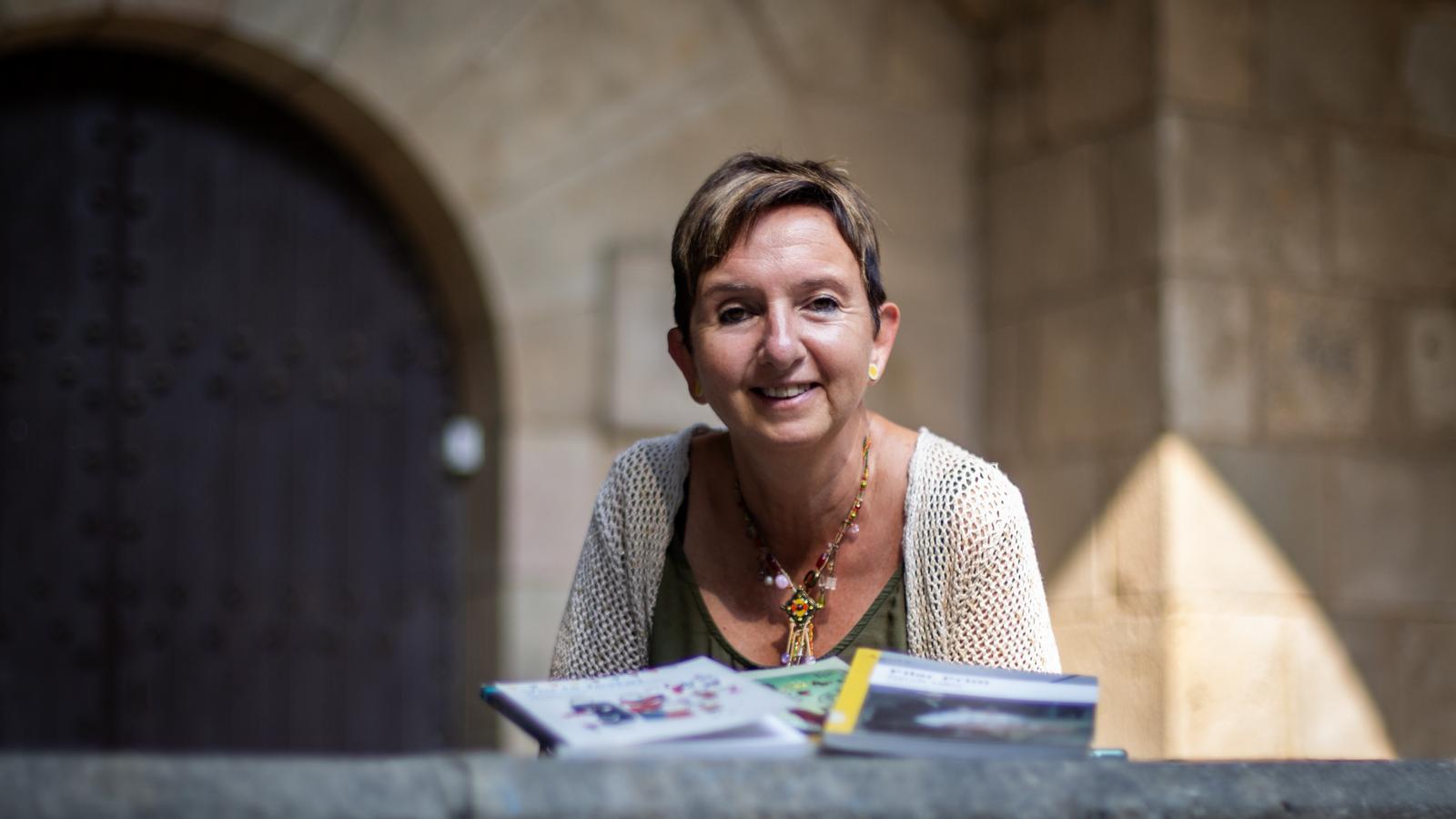"Students don't even make the effort to tell me they want to learn Catalan."
Mireia Estapé is a specialist in introducing newcomers to reading Catalan.


BarcelonaMireia Estapé has been helping people read for over twenty years. She does so using a specific method: easy reading, which is aimed at people who have difficulty following a standard text, such as people with disabilities, the elderly, or newcomers—her specialty. Estapé explains that it's work that must be done "with the heart." It requires patience, creativity, and empathy. "You have to know how to convey that studying a language isn't like studying history. It's something else: it's living it," she says.
But what is an easy-to-read text? No, it's not just a book with large print; they are texts that allow for better understanding. To achieve this, several formal resources are used: "They must have a very specific structure: short paragraphs, with a maximum of 70 to 75 spaces per line, clear font, the text must be left-justified, and the vocabulary must be carefully selected." On the other hand, the reading process is also modified to make it less complex: for example, time jumps or exhaustive character descriptions are eliminated. However, Estapé assures that the books are designed in such a way that, once you finish reading, you feel the "same feeling" as the normal version.
The expert, a member of the Easy Reading Association, has organized easy reading clubs in various settings, including libraries, nursing homes, and associations for people with disabilities. As she explains, these spaces aren't just for reading; they're also for sharing, talking, and growing. "Reading should be accompanied. It's not just about reading a book and discussing it two weeks later. It needs to be dynamic and divided into sessions," she says. For this reason, Estapé believes it's worth organizing more personal sessions: "I've organized everything from hot chocolate parties to music sessions." She also emphasizes the importance of reading aloud. "When you learn a new language, you have to awaken a new self. If you don't speak it, it's impossible to connect with this new self," he says.
Learning Catalan
Aside from facilitating easy-to-read courses, Estapé also teaches Catalan to adults. Concerned, she notes that few students actually want to learn the language: "When I ask them why they're in class, they don't even hide: before, they still told me they wanted to learn Catalan; now, they don't even make an effort; they just tell me they're here for the Catalan residence certificate." Thus, she explains that many of her students only seek to reach level A2 to get their papers, and not because of any real desire to learn Catalan. "If you have a student who comes every day to warm your seat, do you also have to give them the certificate?" she questions, adding: "It can't be that when they walk out the door, their entire life will be in Spanish again."
Although, according to Estapé, this is the most "common" thing, she also describes some success stories, such as that of a student from Sweden who, after a year and a half of study, already had a C2, the highest recognized level. Although those who usually have the easiest time learning the language are those who have already mastered a Romance language, the truth is that those with a clear goal are the ones who end up excelling. This is the case with taxi drivers: "I've had many in class, and of course, since they're required to know at least a minimum of Catalan, they usually get involved. They love the job."
